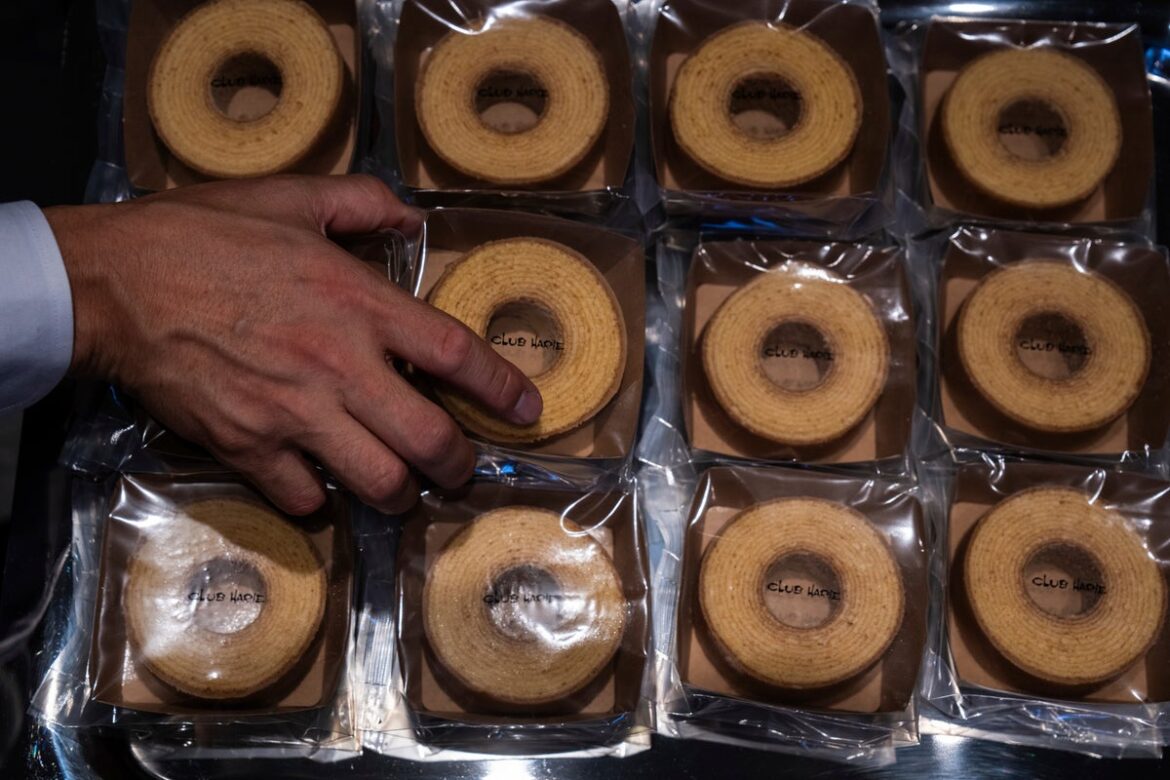Your support helps us to tell the story
From reproductive rights to climate change to Big Tech, The Independent is on the ground when the story is developing. Whether it’s investigating the financials of Elon Musk’s pro-Trump PAC or producing our latest documentary, ‘The A Word’, which shines a light on the American women fighting for reproductive rights, we know how important it is to parse out the facts from the messaging.
At such a critical moment in US history, we need reporters on the ground. Your donation allows us to keep sending journalists to speak to both sides of the story.
The Independent is trusted by Americans across the entire political spectrum. And unlike many other quality news outlets, we choose not to lock Americans out of our reporting and analysis with paywalls. We believe quality journalism should be available to everyone, paid for by those who can afford it.
Your support makes all the difference.Read more
Baumkuchen, a confectionery with German origins, has found an unexpected home in Japan, where it is now a wildly popular sweet.
Its introduction to the country traces back to a prisoner of war on a small western island, who began crafting the treat that would eventually become a cultural staple.
Known as “tree cake” due to its distinctive ringed appearance resembling a tree trunk, Baumkuchen symbolises longevity and prosperity in Japan.
It is celebrated at dedicated festivals and has become a cherished gift for weddings and birthdays, often featuring Japanese adaptations such as matcha and sweet potato flavours.
From luxury department stores offering elaborate gift boxes to convenience stores stocking individually wrapped versions, its presence is ubiquitous.
Today, making Baumkuchen is a popular activity on Ninoshima, an island just a 20-minute ferry ride from Hiroshima.

open image in gallery
Staff make Baumkuchen at the Juccheim Ninoshima Welcome Centre (AP)
Visitors to this sleepy island are also encouraged to learn about its significant role in Japan’s wartime history, says Kazuaki Otani, head of the Juccheim Ninoshima Welcome Centre.
At the outdoor centre built over the site of a prisoner of war camp, amateur bakers pour batter on a bamboo pole and roast the mixture over a charcoal fire.
As the surface turns light brown, a new layer is poured, creating brown rings as the cake grows thicker and the sweet smell wafts through the picnic area.
This is how a German confectioner named Karl Juchheim baked Baumkuchen while he was imprisoned on the island more than 100 years ago.
During Japan’s militarist expansion period beginning in the late 1890s, Ninoshima served as a military quarantine station as nearby Hiroshima developed into a major military hub.

open image in gallery
Karl Juchheim, the German who introduced Baumkuchen to Japan (Supplied)
About 4,700 mostly German civilians and servicemembers were kept at 16 camps across Japan during World War I. The German prisoners at Ninoshima were given “a certain degree of freedom” and allowed to cook, Mr Otani said.
Mr Juchheim was running a bakery in Qingdao, China, then a German territory, when he was captured by the Japanese in 1915.
He arrived on Ninoshima in 1917 with some 500 German POWs and is believed to have tested his Baumkuchen recipe there, Mr Otani said.
When the war ended in 1918, Mr Juchheim and about 200 fellow POWs stayed in Japan.
In March 1919, Mr Juchheim’s Baumkuchen commercially debuted in Japan at the Hiroshima Prefectural Products Exhibition. His handmade cake was hugely popular and attracted a big crowd of Japanese visitors, historical documents show.
The confectioner opened a pastry shop in Yokohama, near Tokyo, in 1922.
The 1923 Great Kanto quake destroyed the business and forced Mr Juchheim to move his family to the western port city of Kobe, where he opened a coffee shop serving Baumkuchen. That store was levelled by US firebombings on Kobe two months before the end of World War II.

open image in gallery
Participants cut Baumkuchen on Ninoshima (AP)
Yet he remained and grew the business in Kobe, where Juchheim Co., Ltd., still operates as one of Japan’s top confectioners with the help of his wife Elise and devoted Japanese staff.
The atomic bomb dropped by the U.S. on Hiroshima on 6 August 1945, and another on Nagasaki three days later killed more than 210,000 by the end of that year.
In the aftermath, about 10,000 severely injured victims were shipped from Hiroshima to Ninoshima for treatment and temporary shelter. Most died there and many of their remains have yet to be found, experts say.
Mr Juchheim died of illness at a Kobe hotel on 14 August 1945, the day before Japan announced its surrender.
“His baking was an expression of his wish for peace,” Mr Otani said.
“By sharing with visitors what things were like back then, I hope it gives people an opportunity to reflect on peace.”


AloJapan.com